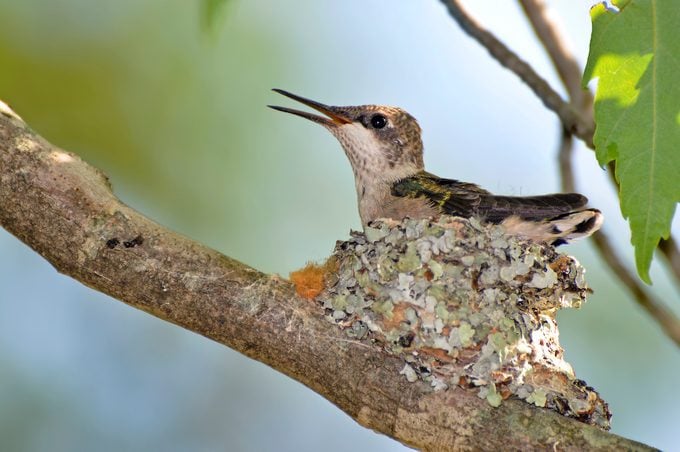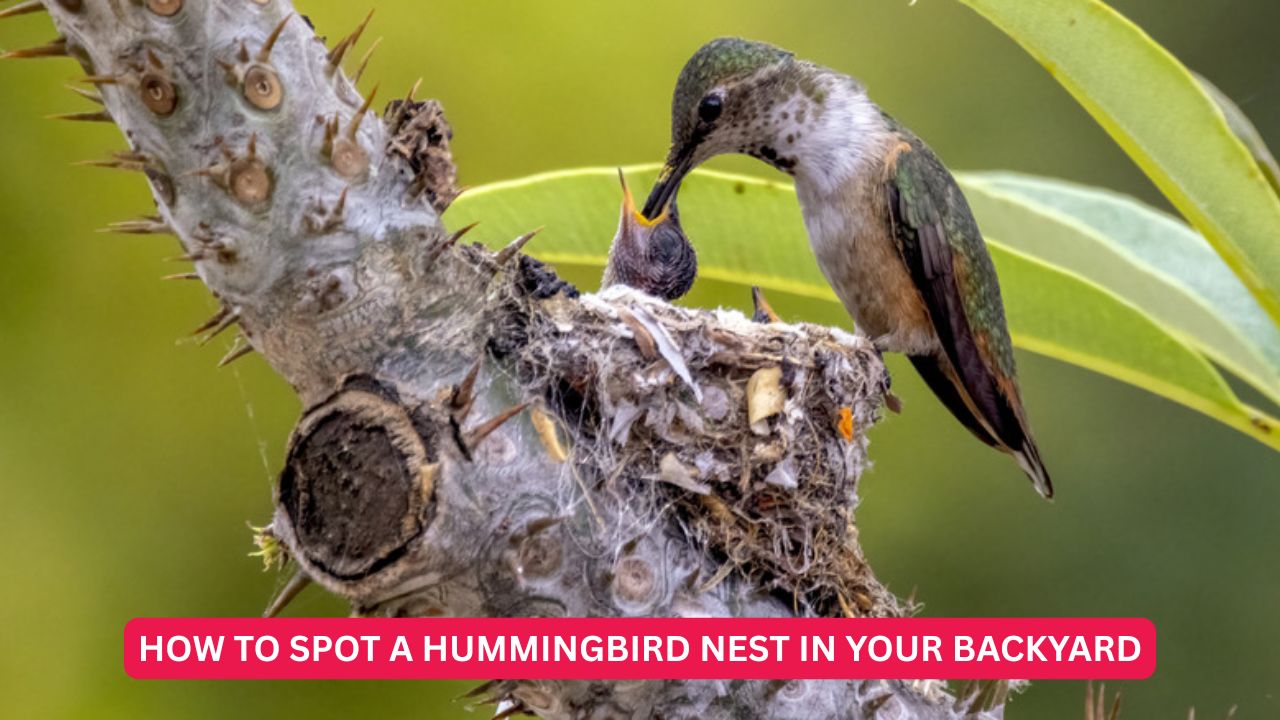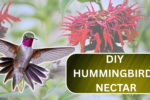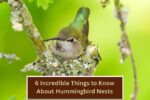People all over the country love watching hummingbirds dart around their backyards. Many go out of their way to attract these tiny, energetic birds—whether it’s by carefully timing when to hang feeders or trying to keep predators like praying mantises at bay.
Yet, for all the time spent admiring their zippy flights between flowers, trees, and feeders, surprisingly few have ever spotted a hummingbird nest. But once you know what to look for, finding a nest in your backyard becomes much easier.
Hummingbirds weigh just a few grams and lay eggs no bigger than a pea, so it’s no wonder their nests are tiny. Most nests are just a couple of inches wide and tall—about the size of a golf ball or slightly larger. That small size makes them tricky to find. And because they blend in so well, people often mistake them for knots or odd growths on trees.
Since hummingbirds are small and don’t have built-in defenses, they go to great lengths to keep their nests hidden. That makes spotting them tough for both predators and birdwatchers. These birds often choose dense foliage or thorny shrubs to keep their nests out of sight.
When they can’t nest in heavy cover, they usually opt for branch forks or large limbs, crafting their nests from lichen, moss, spider webs, and bits of bark. The result? A nest that looks just like part of the tree.

Tips for Spotting Hummingbird Nests
One of the best ways to find a hummingbird nest is by watching a female fly into it. Only females build nests, guard eggs or chicks, and feed the young—males take no part in this process and never visit the nest. So, if you see a hummingbird returning to the same spot multiple times, it’s probably a mom heading back to her little ones.
Females often build their nests close to feeders or water sources that keep them nourished. After a quick sip or snack, they’ll fly home, making them easier to follow. Tracking their movements with care and patience might reveal the nest’s hidden location.
If you can’t follow a female, there are still ways to spot these tiny homes. Watch for anything unusual on a tree branch—a small bump, knot, or odd shape could be a nest. Since they’re so small, even from a short distance, using binoculars like the Bushnell H2O waterproof binoculars can make a big difference.
Another helpful method is to listen closely. Hummingbirds make high-pitched chirps, chatters, and whistles. If you hear them frequently in one area, you might be close to a nest. This trick works especially well in thick foliage where nests are harder to see.
This article has been carefully fact-checked by our editorial team to ensure accuracy and eliminate any misleading information. We are committed to maintaining the highest standards of integrity in our content.

Outside of work, he enjoys playing chess, following cricket, and writing short stories. His commitment to integrity and in-depth analysis strengthens OTE News’ mission of providing trustworthy journalism.




